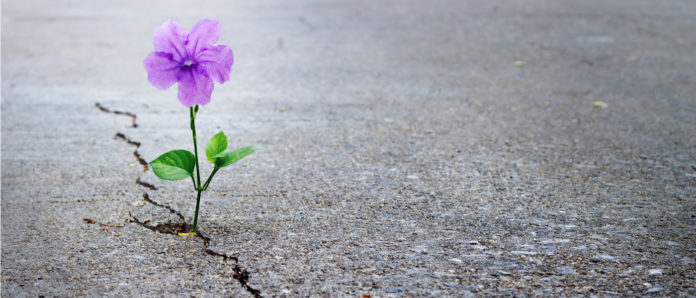I don’t often hear things that genuinely surprise me, but a talk I heard at the weekend’s ‘Impact Summit’ was an exception. A young man, Bariz, told the story of how, as an Afghan refugee, he had grown up in New Zealand feeling very out of place (he did not talk about the casual racism that we now know that refugees, migrants, Māori and Pasifika face on a daily basis, but it was implied). As a young man he travelled to Afghanistan to see whether a visit ‘home’ would provide him with the sense of belonging he craved.
While he faced significant doubt and perhaps even depression in Aotearoa, he found in Afghanistan people that, despite 40 years of war, faced life with optimism and cheer. He was amazed at the resilience of these people who had nothing, owned nothing, often slept on the streets but faced life with hope that things would get better.
Instead of being depressed at what he found, what he saw gave him inspiration. We have so much in New Zealand – surely we can all live well and happily? He became an engineering student and is currently President of the Muslim Students Association at Canterbury University.
My surprise at his story was that, generally speaking, people take their own passions and motivation to countries like Afghanistan, not import them back into New Zealand. This was a powerful thing for me, and a reminder that capitalist countries, however lovely, leave people behind in ways that perhaps do not happen in places with a focus on community and survival.
The story does not end there. After the Christchurch Mosque attacks Bariz and Saba (who are partners) decided to honour the 51 dead by helping 51 Afghans into micro-businesses (food stalls, veges, sewing clothes etc). They have raised $20,000 on Give a Little (the page is now closed) and intend to set up 51 businesses every two years.
He has found in himself, he says, a real passion for working with those who do not have the same advantages as himself, and it has changed his life. This bit does not surprise me. Doing good things for/ with others, which can be risky – the road to hell is paved with good intentions and all that – can nonetheless be highly rewarding for people and is, I think, good for the soul (whatever that is).
They are looking to repeat the micro-business model every two years, but I expect that it will develop and change focus, as these things tend to do.
Another presentation was by Alanna Chapman of the wine company 27 seconds, which is using a social enterprise model to give away all the firm’s profits to end human trafficking and sex slavery in a number of countries. It is a pretty inspiring model also.
What I was thinking about while listening to these people was that, while their motivation came from things they saw in other countries, both these interventions could equally be used in New Zealand. There are in fact a number of organisations supporting microbusinesses, often with a focus on helping young people with disabilities or mental illness.
New Zealand’s record on human trafficking is very problematic, and indeed there is no clear definition of what it is. Thai sex workers in Auckland? Indian immigrants working 60 hours and paid for 30 at minimum wage? Child labour in Chinese factories? New Zealand can also be said to contribute to worker coercion by tying work visas to a particular employer, thus locking workers in to what might be (and frequently is) exploitative conditions. We have no Modern Slavery Act in New Zealand, unlike the UK and Australia – the lasw is weak and murky.
Reflecting on the international work being taken up by young people through enterprise or other models, should also focus the spotlight back onto NZ as a country and our own shortcomings. Ensuring that our migrant and refugee families are free of the casual racism endemic in our society would be a great start and would not cost a cent. Ensuring that all workers are free of coercion and properly paid would be a fine second step.
Perhaps the answer to all these questions is in the young people who are beginning to have an impact on how we conduct our lives socially, economically, sustainably and ethically. They are actually out there doing these programmes and modelling them to young people as options for action. This was a university event and pretty middle class – it would be good to see such ideas reach those in more deprived communities too.
Dr Liz Gordon is a researcher and a barrister, with interests in destroying neo-liberalism in all its forms and moving towards a socially just society. She usually blogs on justice, social welfare and education topics.






Liz read this please; Edited (shortened) press release for Climate change week.
https://www.news.com.au/technology/environment/climate-change/fiveyear-period-ending-2019-set-to-be-hottest-on-record/news-story/895e9c2239979888a2089a1311976c9f
Latest 23/9/19 ‘Australian newscorp’
(Quote) “Five-year period ending 2019 set to be hottest on record.
A few days after kids across the globe marched in support of environmental issues, the UN has released a new report on the current state of the planet, and it’s not pretty reading.” (un-quote)
We at CEAC hope That – Hon’ Jacinda Ardern and her NZ Government successfully get the Global Village to agree to ‘serious reductions in GHG emissions’ at this week’s Climate Change “Action Summit” special meeting at the UN in New York this week at it is their final chance for our future.
https://www.stuff.co.nz/environment/climate-news/116002384/climate-change-accelerating-world-leaders-feel-the-heat-in-upcoming-un-climate-summit
Quote; “Only those with new, specific and bold plans can command the podium and the ever-warming world’s attention, Secretary-General Antonio Guterres said.
So sit down, Brazil. Sit down, Saudi Arabia. Sit down, Poland. “People can only speak if they come with positive steps. That is kind of a ticket,” Guterres said. “For bad news don’t come.”
As if to underscore the seriousness of the problem, the UN’s World Meteorological Organisation released a science report Sunday showing that in the last several years, warming, sea level rise and carbon pollution have all accelerated.”
Climate change is here – we all need to do our part.”
Monday 23rd September 2019.
Press Release: Citizens Environmental Advocacy Centre
Climate change is happening.
CEAC – compendium facts tribute to ‘Climate Change Week’
https://www.stuff.co.nz/science/115098866/exceptionally-rare-warming-above-antarctica-may-be-affecting-nzs-weather
• So how do we get more out of life by using less energy and lower the air pollution/emissions that is increasing global warming?
ANSWER; Use public transport and rail freight rather than the National Party policy to commit 90% of all NZ’s freight task to road freight but this Government (EY) 2016 transport study shows we need far more rail use.
https://www.kiwirail.co.nz/assets/Uploads/documents/70bd71037f/The-Value-of-the-Rail-in-New-Zealand.pdf
http://www.scoop.co.nz/stories/PO1908/S00391/ceac-supports-tribunal-criticism-of-crown-freshwater-failure.htm
On August 29th 2019 CEAC wrote an article showing how our rural area was exposed from overuse of truck freight that will cause road runoff pollutants into our waterways now since (quote) ‘our environment is now increasing with more trucks carrying all stock, aggregate, fertilser, supplies for farming, eg; fencing, draining pipes, earthmoving equipment, aggregate, stock feed, and many other supplies, so history now tells us that these trucks are also causing more carbon/emissions and pollutants from ‘road runoff of effluent, and vehicle contaminants’ EG; tyre dust, brake/clutch oil/exhaust pollutants as discussed in our press release.’ (unquote)
• How can we reduce (micro-plastics) along with other pollutant impacts to our steams/rivers/lakes/aquifers/drinking water/coastal regions?
IMPORTANT TO CONSIDER;
We must also stop the discharge of those tyre dust micro-plastics ‘road runoff’ into our coastal estuaries as this allows the microplastics to be carried by tidal/current flows to our polar ice shelves and snowfields which will increase snow and ice melting as a team of German scientists two weeks ago discovered tyre particulates have been discovered ice the polar snow and icecaps. https://phys.org/news/2017-02-tiny-plastic-particles-tyres-clogging.html
https://onlinelibrary.wiley.com/doi/full/10.1002/app.45701
While NZ could become a world leader by finally producing the first ‘new commercially available ‘eco-friendly vehicle tyre composition’ since it has been science tested but yet to go into production,
‘Eco-friendly vehicle tyre composition’ has been on the scientific horizon and has been known since 2001, – so why is it not in widespread use by now?
Perhaps ‘Big Oil’ felt it would damage their financial status after an oil free component vehicle tyre may be popular as they can be made of grass, trees, corn, and perhaps no petrochemicals may be needed to build the first “Eco-tyre?
(QUOTE) “According to the Rubber Manufacturers Association, each tire produced takes 7 gallons of oil”
These two documents provide the evidence to show about “road dust from tyres is an overlooked pollutant of our waterways.
Tyre dust is micro-plastics.
https://ec.europa.eu/environment/integration/research/newsalert/pdf/277na4_en.pdf
https://pubs.acs.org/doi/abs/10.1021/es400871j
• If the world is to limit the effects of global warming, drastic changes must be made and the Intergovernmental Panel on Climate Change (IPCC) report https://www.ipcc.ch/sr15/ Executive Summary.
• All must be taken seriously now along with; “Comparison of Tire and Road Wear Particle Concentrations in Sediment for Watersheds in France, Japan, and the United States by Quantitative Pyrolysis GC/MS Analysis” report on sediments for watersheds.
https://pubs.acs.org/doi/abs/10.1021/es400871j
QUOTE: “Comparison of Tire and Road Wear Particle Concentrations in Sediment for Watersheds in France, Japan, and the United States by Quantitative Pyrolysis GC/MS Analysis
Abstract – Edited;
Impacts of surface runoff to aquatic species are an ongoing area of concern. Tire and road wear particles (TRWP) are a constituent of runoff, and determining accurate TRWP concentrations in sediment is necessary in order to evaluate the likelihood that these particles present a risk to the aquatic environment. TRWP consist of approximately equal mass fractions of tire tread rubber and road surface mineral encrustations. Sampling was completed in the Seine (France), Chesapeake (U.S.), and Yodo-Lake Biwa (Japan) watersheds to quantify TRWP in the surficial sediment of watersheds characterized by a wide diversity of population densities and land uses. By using a novel quantitative pyrolysis-GC/MS analysis for rubber polymer, we detected TRWP in 97% of the 149 sediment samples collected. The mean concentrations of TRWP were 4500 (n = 49; range = 62-11 600), 910 (n = 50; range = 50-4400) and 770 (n = 50; range = 26-4600) μg/g d.w. for the characterized portions of the Seine, Chesapeake and Yodo-Lake Biwa watersheds, respectively. A subset of samples from the watersheds (n = 45) was pooled to evaluate TRWP metals, grain size and organic carbon correlations by principal components analysis (PCA), which indicated that four components explain 90% of the variance. The PCA components appeared to correspond to (1) metal alloys possibly from brake wear (primarily Cu, Pb, Zn), (2) crustal minerals (primarily Al, V, Fe), (3) metals mediated by microbial immobilization (primarily Co, Mn, Fe with TOC), and (4) TRWP and other particulate deposition (primarily TRWP with grain size and TOC). This study should provide useful information for assessing potential aquatic effects related to tire service life.
‘Impacts of surface runoff to aquatic species are an ongoing area of concern. Tire and road wear particles (TRWP) are a constituent of runoff, and determining accurate TRWP concentrations in sediment is necessary in order to evaluate the likelihood that these particles present a risk to the aquatic environment.” UNQUOTE
This is very definitive study results using GCMS technology and we are at serious risk of extreme watershed pollution from road runoff using all road freight and public transport, and this is why CEAC is advocating use of rail.
https://ec.europa.eu/environment/integration/research/newsalert/pdf/277na4_en.pdf
According to the European Commission Environmental Integration Research the road dust (tyre dust) evidence is confirmed under the heading “Road dust; an overlooked pollutant.”
QUOTE: (Edited)
Many scientific studies have linked particulate air pollution to daily death rates in cities. However, most have focused either on fine particles (less than 2.5 micrometres (µm) diameter), which originate from vehicle exhausts, or on the combined effect of all particles under 10µm diameter, collectively termed PM10.
The total amount of PM10 is regulated under EU law, but the effects of coarse particles (2.5-10µm) are less well known, although laboratory studies suggest that short-term exposure may have serious health effects. In Stockholm, measures to reduce non tail-pipe emissions have included banning the use of private cars with studded tires in some streets to reduce road wear.
The road material is also important – as the harder it is, the lower the emissions (but this results in more noise than soft asphalt). In the new study, Swedish researchers calculated the concentration of coarse particles at a roof-top monitoring station in central Stockholm, using the difference between measurements of PM10 and PM2.5. They compared the daily averages of coarse particles for 2000-2008 with the number of daily deaths (excluding deaths due to external causes), using information from the Swedish Cause of Death Register.
There were 93,398 deaths during the study period, or, on average, 28.4 per day, and on average coarse particles made up 42% of total PM10 concentration. The researchers found that an increase in the coarse particle concentration of 10µg/m3 , resulted in a 1.7% increase in the daily death rate.
This relationship was associated with average levels on the day before death and the actual day, indicating a short-time lag. When these results were corrected for the presence of fine particles and other pollutants (ozone and carbon monoxide), the estimated effect of coarse particles decreased a little, but was still higher than the estimated effect of fine particles.
The increase in daily death rate was higher in late winter and spring (November-May) than in summer and autumn (Jun-Oct): 1.69% compared to 1.31%. This corresponded to higher coarse particle levels during this period; concentrations of over 20µg/m3 were found on 148 days during November-May compared to just four days at other times of year.
Although this study does not examine causes of death, experimental studies have linked exposure to coarse particles with pulmonary inflammation, impairment of the nervous system and development of cardiac arrhythmias. Having already accounted the effect of factors such as weather (temperature and humidity) on daily mortality,
This study is free to view at: http://ehp03.niehs.nih.gov/article/info%3Adoi%2F10.1289%2Fehp.1103995 Contact: kadri.meister@envmed.umu.se Theme(s): Air pollution, Environment and health, Urban environments Road dust: an overlooked urban pollutant
a landmark report from the Intergovernmental Panel on Climate Change (IPCC) says.
. QUOTE;
https://www.ipcc.ch/sr15/
Executive Summary (Edited.)
This chapter frames the context, knowledge-base and assessment approaches used to understand the impacts of 1.5°C global warming above pre-industrial levels and related global greenhouse gas emission pathways, building on the IPCC Fifth Assessment Report (AR5), in the context of strengthening the global response to the threat of climate change, sustainable development and efforts to eradicate poverty.
Human-induced warming reached approximately 1°C (likely between 0.8°C and 1.2°C) above pre-industrial levels in 2017, increasing at 0.2°C (likely between 0.1°C and 0.3°C) per decade (high confidence). Global warming is defined in this report as an increase in combined surface air and sea surface temperatures averaged over the globe and over a 30-year period. Unless otherwise specified, warming is expressed relative to the period 1850–1900, used as an approximation of pre-industrial temperatures in AR5. For periods shorter than 30 years, warming refers to the estimated average temperature over the 30 years centred on that shorter period, accounting for the impact of any temperature fluctuations or trend within those 30 years. Accordingly, warming from pre- industrial levels to the decade 2006–2015 is assessed to be 0.87°C (likely between 0.75°C and 0.99°C). Since 2000, the estimated level of human-induced warming has been equal to the level of observed warming with a likely range of ±20% accounting for uncertainty due to contributions from solar and volcanic activity over the historical period (high confidence). {1.2.1}
Warming greater than the global average has already been experienced in many regions and seasons, with higher average warming over land than over the ocean (high confidence).
Clearly climate change is here. – We all collectively need to do our part.
CEAC.
“intend to set up 51 businesses every two years.”
Their story is inspiring. Thank you.
“Perhaps the answer to all these questions is in the young people who are beginning to have an impact on how we conduct our lives socially, economically, sustainably and ethically. They are actually out there doing these programmes and modelling them to young people as options for action.”
Comments are closed.